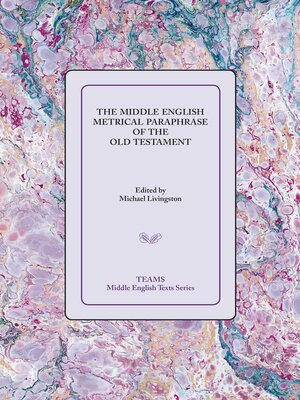The Middle English Metrical Paraphrase of the Old Testament
ebook ∣ The ca. 1518 Translation and the Middle Dutch Analogue, Mariken van Nieumeghen · TEAMS Middle English Texts Series
By Michael Livingston

Sign up to save your library
With an OverDrive account, you can save your favorite libraries for at-a-glance information about availability. Find out more about OverDrive accounts.
Find this title in Libby, the library reading app by OverDrive.



Search for a digital library with this title
Title found at these libraries:
| Library Name | Distance |
|---|---|
| Loading... |
Like the Bible upon which it is based, the metrical paraphrase is unlikely to be a text read cover-to-cover by the faint-hearted. The Paraphrase is, in several ways, a remarkable artifact of the Chaucerian period, one that can reveal a great deal about vernacular biblical literature in Middle English, about readership and lay understandings of the Bible, about the relationship between Christians and Jews in late medieval England, about the environment in which the Lollards and other reformers worked, about perceived roles of women in history and in society, and even about the composition of medieval drama. The Paraphrase-poet's proclamation that he intends to write stories "for sympyll men" (line 19) to understand the Scriptures and be engaged by them-"That men may lyghtly leyre / to tell and undertake yt" (lines 23-24)-thus combines the profit of sacred literature with the pleasure of the secular. This is Horace's utile et dulce ("both useful and pleasing") principle at its clearest, a singular example of the didacticism that characterizes so much of medieval literature, an aesthetic of pedagogic efficacy that is inseparably linked to the essential component of true pleasure in the text.







